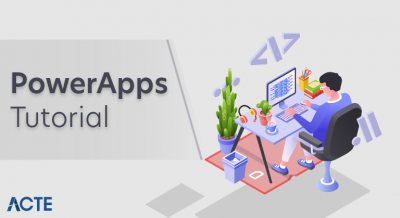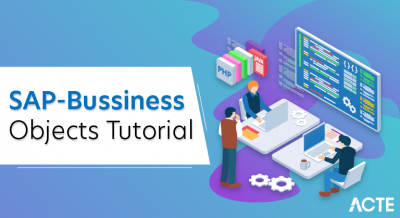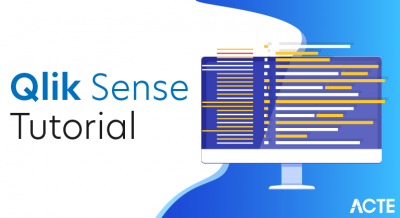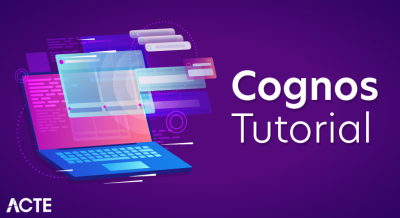
- Introduction to Couchbase
- Couchbase stands out by several features
- Installation and Configuration
- Setting Up Couchbase
- Types of Couchbase
- Process of Couchbase
- Couchbase Architecture Overview
- Data Modeling in Couchbase
- Querying with N1QL
- Conclusion
Introduction to Couchbase
Couchbase is a powerful, distributed NoSQL database that’s supposed to provide scalability for critical needs, performances, and resilience. Combining elements from key-value stores, document databases, and full-text search engines allows you to deal with structured and unstructured data at your discretion. Still, Couchbase is a good fit for applications requiring low latency, real-time data access, and horizontal scalability. It’s a robust fit for high-demand environments like e-commerce platforms, content management systems, and mobile apps. For more insights, check out our Couchbase Tutorial.
Ready to earn your Couchbase Professional Certification? Discover the Couchbase Certification Course now available at ACTE!
Couchbase stands out by several features
- Data can be stored across many nodes to ensure almost 100% availability and fault tolerance.
- It features flexible data models because of its JSON-document-based model allowing for schema-less storage and, thus, a changeable data structure.
- Its query language is N1QL, pronounced “Nickel,” which allows SQL like queries on the JSON documents for complex queries and data manipulation.
- Couchbase natively includes full-text search capabilities for complex text searching across documents.
- Couchbase provides the facility of auto-invoking server-side functions upon event sourcing from any data change using Couchbase Eventing.
- Memory-first architecture draws benefits by storing data on disk only if needed, although being optimized to optimize reads and writes.
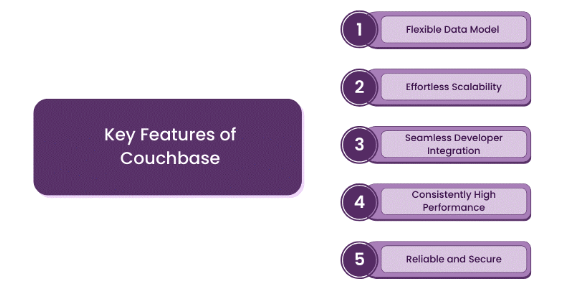
Installation and Configuration
Before using Couchbase, you must follow the installation and configuration steps.
- Step1:Download Couchbase.
Firstly, from the Couchbase Downloads page, download an appropriate version of your operating system
- Step 2: Install Couchbase
Windows run the installer and follow the prompts installed. Linux is a package manager such as apt for Debian-based systems. You are to install Couchbase.
- Step 3: Start Couchbase Server
You start the Couchbase server after installing Windows. Open Couchbase from the Start menu.Linux Open Couchbase from the command line.
- Step 4: Access the Couchbase Web Console
Open a web browser and navigate to http://localhost:8091. This is where you can configure your cluster and manage data.
- Step 5: Create a Cluster
Use the web interface prompts to create a new cluster. Set an administrator username and password.This would include cluster settings memory for each service.
Setting up Couchbase
Couchbase installation consists of the installation of the database software. It is compatible with Linux, macOS, and Windows. After installation, a person will handle all configuration and handling of the cluster only via the Couchbase web console. A typical Couchbase deployment involves multiple nodes with one type of service: data storage, indexing, query processing, or full-text search. Where data is spread across various nodes to make the setup scalable and very available. The configuration also allows for cluster monitoring as well as performance tracking using a variety of management tools.
Types of Couchbase
1.Document Types: Couchbase primarily stores data as JSON documents. The structure of documents can vary from quite organized forms to nearly utterly unstructured, supporting flexible Data Modelling. Some prominent features include:
- JSON Documents: The main data structure in Couchbase, supporting nested fields and arrays. Each document has an exclusive key.
- Binary Documents:Couchbase can store non-JSON data, such as images or files, as binary documents, which opens a whole category of possibilities.
Bucket Types: A bucket in Couchbase is like a table in relational databases-a place to hold documents. There are two types of buckets:
- Couchbase Buckets: These buckets enable high availability and persistence with the best possible performance. Reading and writing operations are feasible with these buckets.
- Ephemeral Buckets: These buckets are intended for temporary data storage. The data does not persist in them. They use the scenario where data can be easily created and cached.
Collection Types:Collections are available in Couchbase 7.0. It allows further organization of documents using buckets. It supports logical grouping and access control mechanisms.
- Scopes: It is a group of related collections in one bucket. Scopes can be used for access control management and data isolation.
- Collections:These are the subsets of documents in a bucket, thus having better organization and more data management granularity.
Get Your Couchbase Certification by Learning from Industry-Leading Experts and Advancing Your Career with ACTE’s Couchbase Certification Course.
Index Types: Couchbase provides various indexes that support improving query performance:
- Primary Index:This index allows searching an entire bucket of documents. However, it is hardly ever used in production because of performance issues.
- Secondary Index:Application-defined indexes over specific fields to make query execution performance more efficient. It may be a single-field index or composite index based on one attribute.
- Full-Text Index: It supports full-text search functionalities through which document content can be searched efficiently.
Data Types in Documents: Couchbase supports several types of data in JSON documents, including the following:
- String:Data can be any form of text.
- Number:Integer and floating point
- Boolean:This is equivalent to either true or false.
- Array:An ordered list that may include any values
- Object:An unordered collection of key-value pairs, like dictionaries.
Types of Queries:Couchbase uses N1QLpronounced “nickel”, a SQL-like query language to reference the data written in JSON documents. It supports:
- Select Queries: Returns one or more documents or fields based on conditions.
- Joins: Combine data from several documents by association.
- Aggregate Queries:Evaluate operations over sets of documents, such as counting, summing or averaging values.
Eventing Types:Couchbase Eventing allows developers to implement their functions that will automatically respond to changes in data:
- Event Handlers:Functions that trigger events when documents have been inserted, updated, or deleted. Examples of preprocessing and analyzing data in real-time
- Timers:Enables scheduling functions for their execution, so that repetitive tasks can be scheduled and automation further improved.
Couchbase Architecture Overview
Couchbase is a distributed, multi-node architecture that distributes data across several servers called nodes. Data in Couchbase is partitioned into multiple buckets, which serve as containers for JSON documents, supporting flexible data organization. Replicas of data can be created for fault tolerance. It uses a memory-first architecture, meaning frequently accessed data is stored in the system’s RAM for faster retrieval, while less frequently used data is kept on disk storage. Additionally, Couchbase supports cross-datacenter replication (XDCR), allowing data replication across different geo-locations, similar to how Apache Cassandra handles distributed data management.
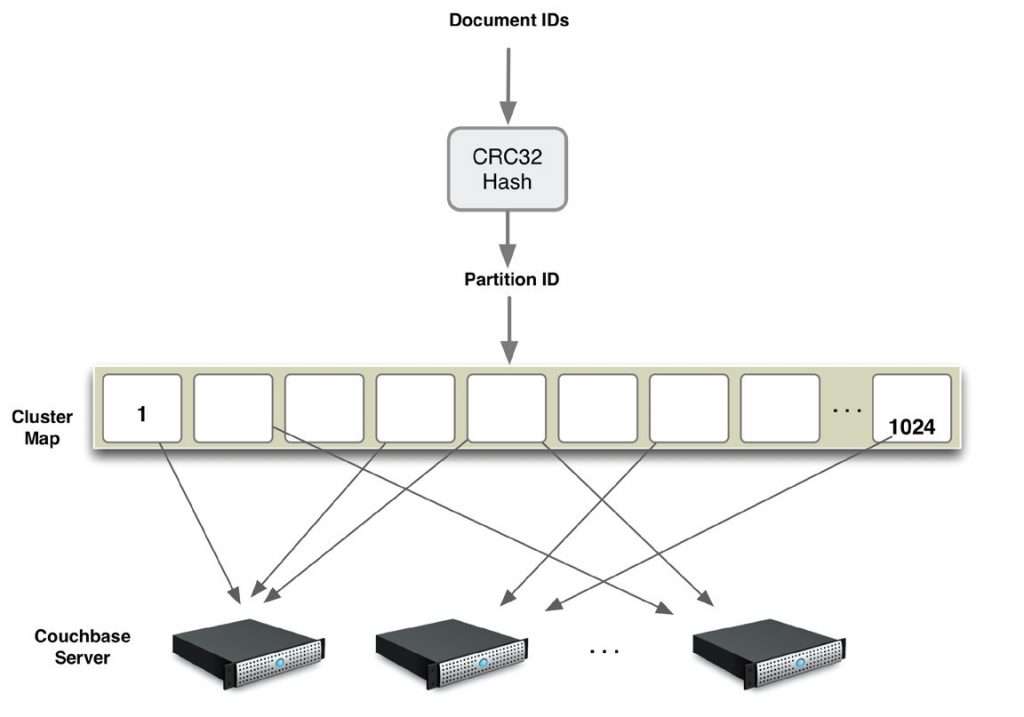
Data Modeling in Couchbase
Couchbase’s data model involves flexible JSON documents and includes a schema-less approach to data storage. Couchbase does not connote a classical relational database where the data is inserted into tables having pre-defined columns. This means the documents in the same bucket are permitted to have varied structures. Therefore, Couchbase is effective for dynamic development and flexibility in changing data requirements. A very important aspect of data modelling within Couchbase is keeping access patterns, document size, and indexing requirements under consideration.
Couchbase Indexing and Optimization
Indexing is an important feature of Couchbase that improves the performance of queries. It allows the system to identify which documents or data subsets to select easily. Here’s how you can get an idea of the concepts and strategies for optimizing indexing within Couchbase:
- Primary Index: This index is automatically opened whenever a bucket is created. While it supports simple queries, it is not designed for more complex or performance-based queries. Thus, secondary indexes are favoured for better performance.
- Secondary Indexes: As described above, secondary indexes are a set of user-defined indexes that help the query find all its requirements according to specific fields or expressions in JSON documents. Depending on the number of fields involved, secondary indexes can be either simple or compound, allowing for more complex queries.
Want to Master Data Science? Explore the Data Science Master Program Offered at ACTE Today!
Indexing Strategies
- Index Coverage: The index must cover the query so that all the fields needed to serve it are available.
- Indexing Frequency: Indexes should be created so that they do not harm the documents too much during the update process. Too many indexes can degrade write operation performance.
- Choose the Index Type Based on Query Patterns: A compound index sometimes replaces multiple indexes with improved performance during complicated queries.
- Query Optimization: Couchbase provides the Query Plan feature, through which one can track query execution patterns and whether they are using intended indexes. With knowledge of a query’s execution plan, you can optimize both queries and indexes for best performance.
- Use the EXPLAIN command in N1QL to monitor and improve the execution of a query.
- Avoid over-indexing, as too many indexes can lead to overhead in memory and storage.
- Sometimes, filter queries only when possible to minimize dependence on wide indexes.
- By embracing smart indexing and query optimization strategies, Couchbase will handle Big Data well and provide prompt query responses even as volumes grow.
Indexing Best Practices
Querying with N1QL
N1QL, pronounced “Nickel”, is the SQL-like query language that Couchbase developed specifically to enable direct execution of complex queries over JSON. N1QL lets you do filtering, joining, aggregation, and more updates with data in a very familiar SQL syntax from the developer’s end. The language supports subqueries, full-text searches, and truly complex data manipulations. To optimize query performance, Couchbase allows you to use a range of indexes one primary, one or more secondary, full-text, and spatial indexes and apply them according to the type of query and access patterns on your data. This ensures efficient execution of N1QL queries over massive amounts of data, similar to how PostgreSQL utilizes various indexing strategies to enhance query performance and manage complex data operations.
Couchbase Security and Access Control
Couchbase comes equipped with robust security features that protect access to the data. Its key features include:
- Role-based access Control (RBAC) defines access permissions by user roles and controls who have access to buckets, queries, or other services.
- It supports authentication through username/password, LDAP, Active Directory, and token-based authentication.
- Encryption at Rest: Data is protected when put at rest on a disk.
- Encryption in Transit: Communication protection is done by using TLS/SSL.
- Access Control Lists (ACLs): Provides fine access granularity to buckets and indexes, among other resources.
- Audit Logging: Logs system activities to track and detect unauthorized activity.
- Backup and Restore Security: Supports encrypted backups accessible to authorized users only.
- IP Allowlisting and Firewalls: Offers IP allow listing and firewall rules to add extra layers of defense.
- Monitoring Tools: The Couchbase Admin Console gives real-time insights into cluster health, resource usage, and performance metrics, including memory, CPU disk, and network activity.
- Performance Optimization: Query performance, indexing, and resource utilization are at the core of optimizing Couchbase.
- Scaling Couchbase: One of the strong moves Couchbase makes is horizontal scaling; in other words, adding nodes as your data load or your number of users increases is quite easy.
- Auto-Failover and High Availability: Couchbase auto-fails over to guarantee availability in case of a node failure, automatically promoting replica nodes for continuous service.
- Load Balancing: Couchbase distributes the workloads evenly across nodes so that there will be no bottlenecks in the operation of servers.
Encryption:
Couchbase Performance Monitoring and Scaling
All Set for an Couchbase Job Interview? Take a Look at Our Thorough Collection of Couchbase Interview Questions to Help You Prepare!
Process of Couchbase:
Couchbase is a no SQL-based database platform highly scalable and performance-oriented with efficient data management. It starts with the definition of the data model, where all data is represented in JSON documents arranged in buckets. Users create different buckets to store data with relationships, and every document is uniquely identified through a key. Data ingestion involves inserting, updating, or deleting documents using Couchbase’s SDKs or REST APIs, paralleling the processes of Data Manipulation in SQL , where similar operations are performed on relational database tables. Couchbase supports N1QL-an SQL-like query language to retrieve data for complex queries-direct key-value access for fast lookups. Indexing is an important feature for optimized query performance to ensure search capabilities and uses primary, secondary, and full-text indexes. Common operations that can be used for managing data include automating data replication across nodes for redundancy purposes, scheduled backups to secure data integrity, and high-performance monitoring tools to track performance metrics.
Conclusion
Mastering Couchbase lets developers design high-performance-oriented applications that are also scalable and flexible by using its document-based storage, N1QL queries, and distributed architecture. Success is achieved by effective data modeling, query optimization, and maximization of its additional features, such as Eventing, XDCR, and full-text search capabilities, to design resilient systems. By continuously learning and indexing best practices, along with constant monitoring of performance, you will unlock all your possibilities in Couchbase and solve complex challenges while building applications that will work in the future. For more guidance, refer to our Couchbase tutorial.


